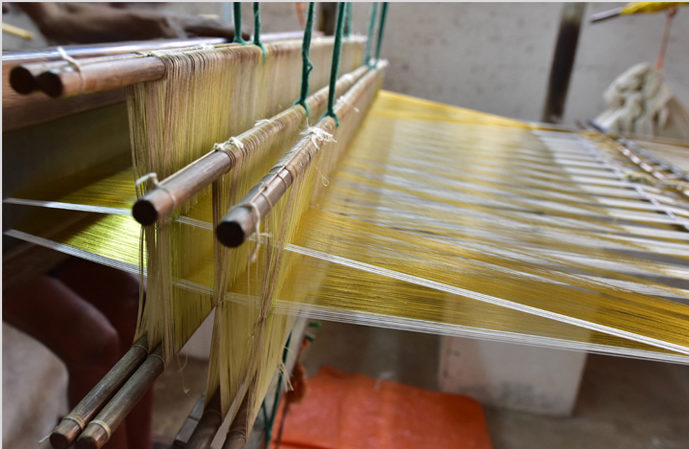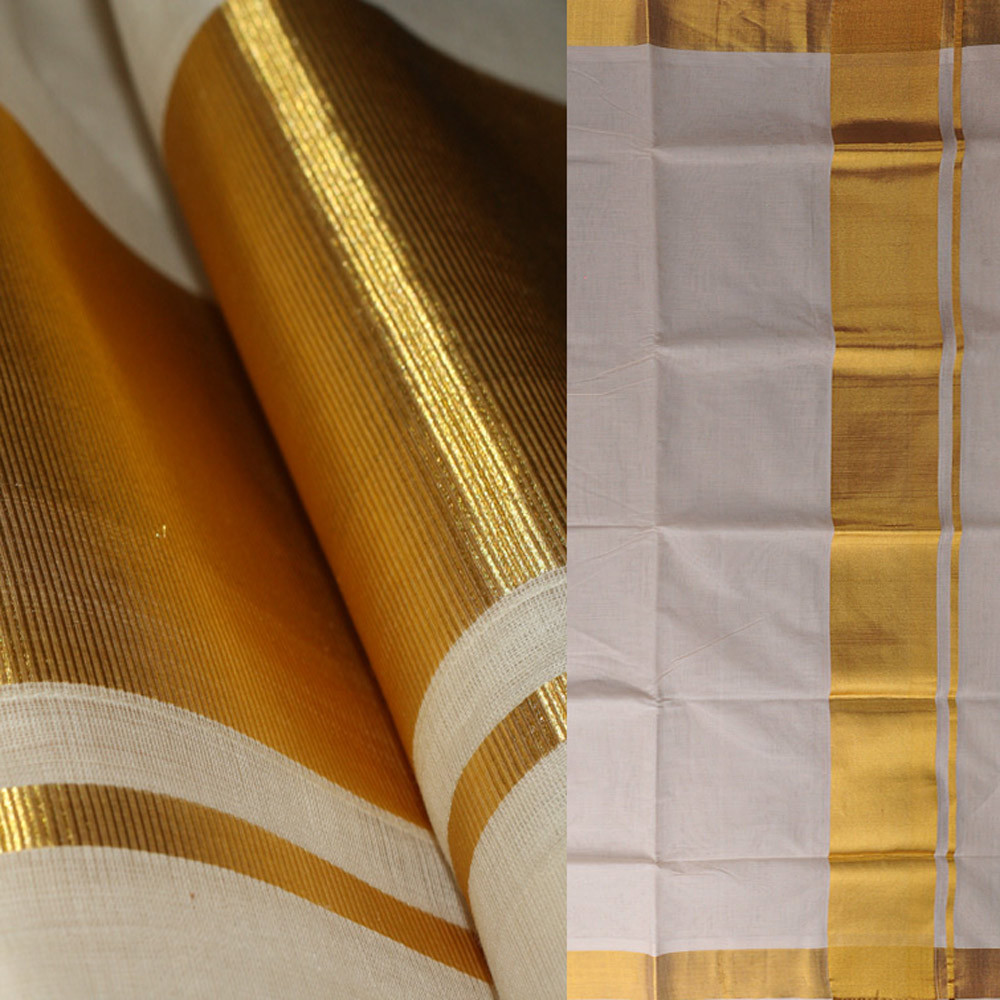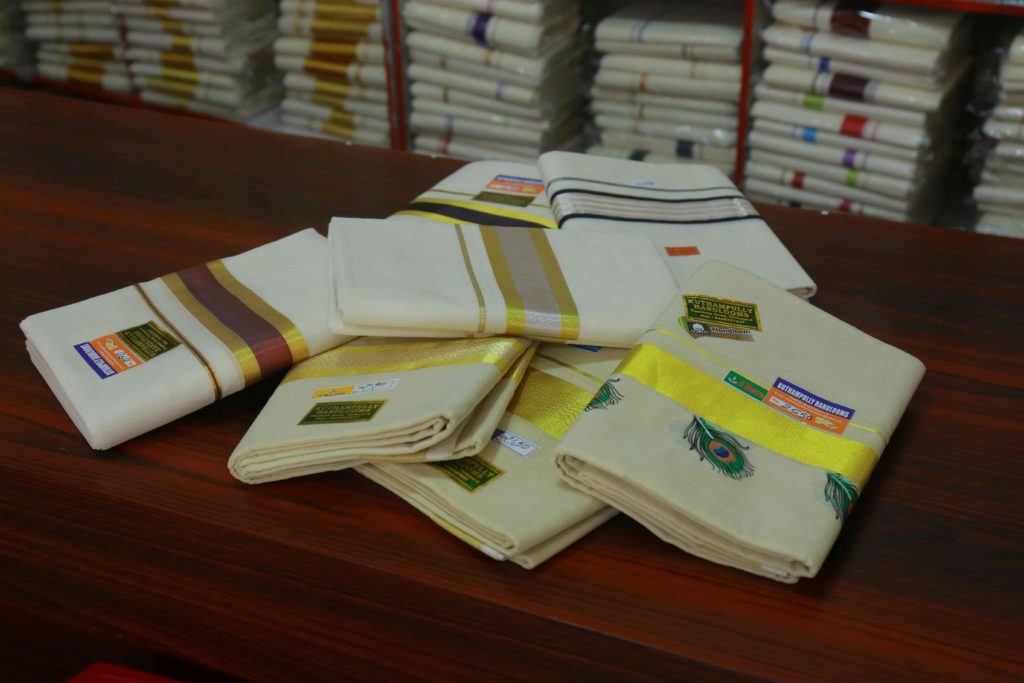The handloom industry in Kerala is drenched in culture and tradition, it is a fine example of exemplary craftsmanship. These handloom products with their beautiful and intricate designs are so well done that one wouldn’t be able to guess they were hand-woven by weavers, weavers who have been at this craft for centuries. There are three main clusters of weavers in the State, each cluster being different from the other because of several unique elements. Kuthampully, Balaramapuram and Chendamangalam are the three major weaving centres in Kerala, these clusters have been given a Geographical Indication Tag by the Indian Government and all three are famous for the weaving of Kasavu Saris as well as Kerala Saris with colored borders.

Three Major Weaving Centres in Kerala
The Balaramapuram cluster is probably the most popular destination for those on the look out for traditional Kasavu saris and mundu. They were brought down by Maharaja Balarama Varma from what is now Valiyur in Tamil nadu to weave fabrics for the Royal family. Their history spans for over 300 years. The members of this cluster are from the Shaliar clan. The Balaramapuram cluster is known for having a simple zari border and it is woven out of natural cotton yarn, there have been experiments in design over the years though.

Chendamangalam, the second cluster, is known for weaving saris with half-fine zari. They are similar to Balaramapuram but with lesser emphasis on the golden border. You can find colored borders with only a small stripe of kasavu for ornamentation.

The Kuthampully cluster is based in Thrissur District, their history takes us back 500 years when their forefathers came to Kerala from Mysore. The weavers of Kuthampully came under the patronage of the Kochi royal family, and had woven fabrics for the Royal family only. The saris by Kuthampully weavers are quite different from the other two clusters as they include more patterns and borders with human motifs.

Saris and Kasavu Saris in Kerala
Saris were practically non-existent before colonization. There was the mundu which would cover the body down, and the upper body remained unclothed for both men and women. Women would be fined, rather, for wearing an upper garment. It was only post-colonization that women covered their upper body, it evolved from the two-piece settu mundu to a single-piece saree over the years.
Kasavu saris are a sure sight at any Malayali function, whether it’s a wedding or a funeral, a kasav sari won’t be hard to spot. Over the years Kasavu Saris have evolved from what it was in its early days to don a more modern and contemporary avatar. Even with elaborate designs and paintings on these saris, the overall attire still remains minimalistic. Kasavu saris got its name from the zari used in the border of the sari, it is the name of the material used on the border of the saris.

The thickness of the golden border signifies the luxury of the loom. You would wear a thick border to a wedding but a thinner one to a funeral. The minimalist design of the sari is its refinement. Many designers have experimented with the traditional concept of the Kasavu Sari while incorporating modern and more maximalist designs, having said that, the minimal Kasavu sari is still evergreen and worn by many ladies today.
With Onam right around the corner, though there aren’t any festivities, women will be looking forward to draping a Kerala Sari and celebrating at home. Kasavu Saris is the go-to attire for women during celebrations of Vishu and Onam, it is so much so that the image of a lady in a Kasavu Sari will pop in every Malayalis head when they hear the word Onam. The offline and online sales of these onam saris hit the peak during such festivals as both young and older women set out to buy them. With the world moving towards remodeling traditional and ethnic outfits, we can find many variants to the Kasavu Saris. Kerala is a State which has great respect for traditions and culture, and therefore one can be sure that Kasavu Saris will still be worn years from now.

